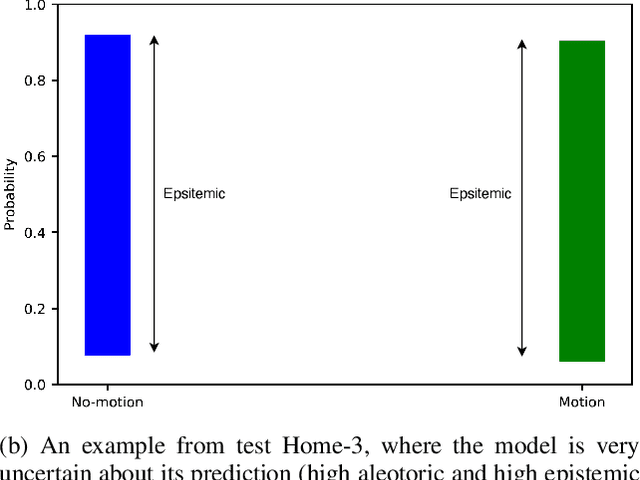Amit Kachroo
Sub-Resolution mmWave FMCW Radar-based Touch Localization using Deep Learning
Aug 07, 2024Abstract:Touchscreen-based interaction on display devices are ubiquitous nowadays. However, capacitive touch screens, the core technology that enables its widespread use, are prohibitively expensive to be used in large displays because the cost increases proportionally with the screen area. In this paper, we propose a millimeter wave (mmWave) radar-based solution to achieve subresolution error performance using a network of four mmWave radar sensors. Unfortunately, achieving this is non-trivial due to inherent range resolution limitations of mmWave radars, since the target (human hand, finger etc.) is 'distributed' in space. We overcome this using a deep learning-based approach, wherein we train a deep convolutional neural network (CNN) on range-FFT (range vs power profile)-based features against ground truth (GT) positions obtained using a capacitive touch screen. To emulate the clutter characteristics encountered in radar-based positioning of human fingers, we use a metallic finger mounted on a metallic robot arm as the target. Using this setup, we demonstrate subresolution position error performance. Compared to conventional signal processing (CSP)-based approaches, we achieve a 2-3x reduction in positioning error using the CNN. Furthermore, we observe that the inference time performance and CNN model size support real-time integration of our approach on general purpose processor-based computing platforms.
Quantifying Uncertainty with Probabilistic Machine Learning Modeling in Wireless Sensing
Oct 12, 2022



Abstract:The application of machine learning (ML) techniques in wireless communication domain has seen a tremendous growth over the years especially in the wireless sensing domain. However, the questions surrounding the ML model's inference reliability, and uncertainty associated with its predictions are never answered or communicated properly. This itself raises a lot of questions on the transparency of these ML systems. Developing ML systems with probabilistic modeling can solve this problem easily, where one can quantify uncertainty whether it is arising from the data (irreducible error or aleotoric uncertainty) or from the model itself (reducible or epistemic uncertainty). This paper describes the idea behind these types of uncertainty quantification in detail and uses a real example of WiFi channel state information (CSI) based sensing for motion/no-motion cases to demonstrate the uncertainty modeling. This work will serve as a template to model uncertainty in predictions not only for WiFi sensing but for most wireless sensing applications ranging from WiFi to millimeter wave radar based sensing that utilizes AI/ML models.
 Add to Chrome
Add to Chrome Add to Firefox
Add to Firefox Add to Edge
Add to Edge